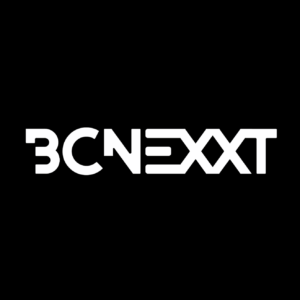
MediaTech Radar is a bi-weekly newsletter usually put together by IABM’s Head of Knowledge Lorenzo Zanni. He is currently at NAB; hence this edition has been created by Riikka Koponen, IABM’s Principal Analyst. MediaTech Radar focuses on a spotlight topic in MediaTech and reflects on a series of past, present, and future business developments in the industry. In this edition, our spotlight topic is MediaTech Trends in Content Infrastructure and Storage.
MediaTech Spotlight: MediaTech Trends in Content Infrastructure and Storage
A spotlight topic in MediaTech.
- In this newsletter, I wanted to introduce you some key trends and observations of our latest Content Chain Trends report on Content Infrastructure and Storage, published last week.
- At the macro level, we see that the global shortage of semiconductors is still causing bottlenecks in production and sales in Connect and Store parts of the content supply chain. This is particularly the case for vendors who are heavily reliant on physical offerings. The pandemic also forced media businesses to decentralize their resources and invest in remote production. Obviously, these operational and strategic changes were enabled by heavy investments in cloud-native media tech and IP-based workflows, which allow remote access and collaboration for teams distributed across different locations and even continent. Moreover, many of these teams have become significantly smaller over the past few years as a result of an industry-wide crew consolidation.
- In terms of IP, our study confirms that the pandemic caused a temporary slowdown of major greenfield (uncompressed IP) projects, while compressed IP projects and public cloud deployments picked up – media businesses continued their move away from centralized, studio-based SDI operations to IP-based decentralized productions to better serve their DTC strategic aims prioritizing productivity, agility and scalability. At the same time, a hybrid SDI/IP approach remains as a preferred interim solution for many broadcasters due to their existing legacy equipment as well as the industry-wide scarcity of skillsets required in IP-related roles. Kieran Kunhyaley, the Founder and CEO at Open Broadcast Systems, described that “as much as I’d like to not talk about the pandemic, it has definitely changed the short- to medium-term focus on IP in a central facility to using IP for remote production or cloud production. So, the trajectory for IP is still growing, but it’s growing in a different way to the way it would have.”

- What about the streaming boom? According to our data, it clearly funneled investment in immersive, interactive content, driving spending on high-performance storage technology, dynamic storage and active archives and consolidation of databases. The explosive data volumes – causing a peak in demand for bandwidth – accentuated the need for low latency applications and remote connectivity, shifting investment focus on edge computing and even mobile edge computing (MEC) through 5G networks, which not only enable faster time-to-market in new regions, but also significantly improve the capabilities of virtualized production teams. For example, AWS announced in February 2022 that it will expand its “Local Zones” edge computing infrastructure to 32 new cities around the world to bring cloud resources closer to decentralized (post-) production teams, enabling them to access to their virtual workstations with very low latency – this is particularly crucial for artists creating visual effects, immersive content and games. In fact, Verizon has already used AWS Wavelength Zones combined with its 5G Edge Compute (MEC) solution to enhance mobile gaming at the 2022 Super Bowl. So, one of the most appealing aspects of AWS Wavelength is that it really enables media companies to build applications like game/live video streaming and AR/VR for mobile video viewers with very low latency.
- Like our data confirms, the COVID-19 pandemic accelerated the adoption of cloud storage, decreasing demand for on-premise However, for many broadcasters – having lots of legacy equipment in place – on-premise storage will continue to play a critical part of their hybrid storage strategies at least in the short- and mid-term, because these existing local storage systems can also store massive amounts of data for a relatively low cost – until the legacy equipment has to be replaced. At the same time, a multi-cloud approach is becoming increasingly popular – many media businesses have realized the growth limitations of working with only one cloud provider, which cannot specialize across a wide range of applications. In addition, many fear ending up in a vendor lock-in. Overall, media companies are taking a more holistic approach to determine their storage arrangements; they are investing in solutions that enable a smoother use of storage tiering and migration options, further improving their flexibility.
- Hyperscalers like AWS, Google Cloud Platform and Microsoft Azure have also started to make their cloud storage options “smarter”, which means that customers can manage their data between hot, cool and cold tiers based on activity and access. For example, AWS’ S3 Intelligent-Tiering automatically moves a data file to a cooler storage class, if it hasn’t been accessed over the past 30 days. IBM Smart Tier gives a similar promise – the data can be flexibly and cheaply moved across hot, cool and cold tiers. Such pricing options help big cloud vendors to “legitimize” their relatively high and unpredictable storage costs.

MediaTech Watchlist: News, OTT…
A watchlist of selected past, present and future business developments in MediaTech.
- The COVID-19 pandemic significantly boosted news consumption around the world and most interestingly also among younger people, who have typically been claimed for mainly following news through social media. Some big news agencies are now sensing a momentum to engage younger viewers as the role of news continues to be accentuated after the health crisis and Russia’s invasion of Ukraine in February 2022. For example, Forbes reported in March that both CNN and MSNBC witnessed significant ratings drops in February compared to Fox News Channel, which has been the predominant outlet for breaking news, when something exceptional happens. To reposition itself in the competition, in March 2022, CNN launched CNN+, a news-focused streaming service offering a wide range of interview shows on international news, politics and other societal topics. According to CNN, it has spent nearly US$100 million in development of the new services and reallocated about 500 employees – including familiar, freshly recruited hosts – to run the new subscription service. Commenting on the new business model in Forbes prior to the launch in March, Andrew Morse, continued CNN executive vice president, said: “We think it [CNN+] can become profitable within a few years. It’s the beauty of a subscription business. You have to have a great product. You have to have great content. You have to have great talent. You can’t be afraid to pivot. You can’t be afraid to continue to take chances. So we feel good about what we’re building.”
- As Disney+ continues its successful international expansion and threatens Netflix’s global hegemony, it is interesting to note that Disney+’s viewer profile seems to be significantly younger and its subscriber base thus more mobile-driven than those of its competitors. A recent study from eMarketer reveals that among all Disney+ viewers, 38.5% are younger than 25, whereas the figure for Netflix stands at 31.8% and even less for YouTube. Taking into notice that less than one third of all connected TV users are under 25 – according to eMarketer – Disney+ hence leaves more competitive space for its rivals in the living room. In the near future, this might turn out to be a drawback for Disney, as the living room will increasingly be the key hub for interactive, gamified and immersive experiences – something in which Netflix is currently investing a lot. In addition, we know that subscription churn is particularly common for younger viewers, so keeping them engaged will require more than a library of old classics.
- The increasing importance of UX and viewer engagement in the OTT space can also be seen in the proliferation of service providers offering video compression and delivery solutions, as OTT live streaming has is becoming more mainstream in the industry. Namely, there are still significant delays in live streaming sports compared to a traditional broadcast. For example, at the 2022 Super Bowl, many major streaming platforms like Hulu, DIRECTV, NBC Sports, Fubo TV and Peacock lagged behind the actual match 50-60 seconds. As sports content becomes increasingly interactive, streaming players need to invest in low latency applications and viewer engagement – the overall UX. Solution providers like ATEME are greatly benefitting from this trend. In 2021, ATEME’s gross profit jumped by 27% and its monthly recurring revenues by 31%, reflecting the growing demand for end-to-end OTT delivery solutions and compression efficiency.
- There are clear signs that sports events are permanently bouncing back after the pandemic at least in Europe – the European sponsorship market increased by nearly 18% in 2021, though still being only a bit above the level of 2017. However, the pandemic has left its mark on sports business; sports audiences will increasingly be divided into those attending live events in big stadiums and to those upgrading their living room experiences through different devices to take the most out of interactive, gamified fan content. Marco Nazzari, Managing Director at Nielsen Sports highlighted that “fandom has shifted from large audiences physically together to more remote yet more engaged behavior through digital devices, impacting both sponsorship models and content distribution”. For sponsors, this might mean buying visibility in a virtual studio or a video game on a pay-per-view basis instead of one large investment in one specific sporting event.
Thank you for reading this newsletter. If there are topics you would like our Business Intelligence team to cover, or have information/ideas you’d like to share, please get in touch with us.
Riikka Koponen
Principal Analyst
IABM









